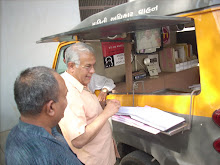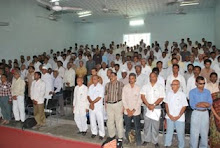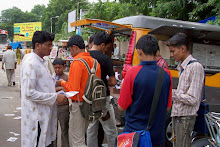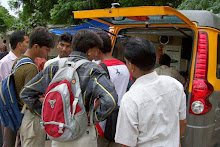Times
of India: Mumbai: Sunday, 27 December 2015.
Few things in
life are as compelling as a full bladder. Last month, it made 22-year-old Laxmi
Pandit plead, bargain and fight with the hard-nosed attendant of a toilet near
Bandra Terminus who refused to allow her in. Due to a water cut, this
three-storeyed Sulabh Shauchalaya had been locked for a whole day clogging the
bodily plumbing of hundreds of women such as Pandit who, ironically enough,
live atop a water pipeline.
"From 11
am to 9.30 pm, we had to control ourselves," recalls Pandit, whose system
retched and vomited in protest. "Imagine what the pregnant women must have
gone through," adds the resident of this 1800-shanties-strong Indira Nagar
slum where most female bladders rely on the two first-floor ladies' loos of
this public toilet for relief.
Of late,
construction work has blocked the gate to this loo "so we have to take a
circuitous route and climb a bunch of cement slabs to get there," says
Pandit. But between the toilet near Colgate Palmolive ground, which heaves with
"unlimited men" as Pandit puts it, and the one near Bandra Family
Court which is always full, this Bandra Terminus loo is the only real option
for these slum women.
The lack of
public toilets for women in Mumbai may be a tired lament but last week, it
found new hope when the Bombay high court directed all the municipal
corporations in the city to provide safe and clean toilets for women. The Right
To Pee movement a united front of 33 women's organisations has been raising a
stink over this matter for years. In 2012, an RTI filed by these RTP activists
found that out of the 10,381 pay-to-use toilet seats in this city of nearly 20
million, a paltry 37% are for women.
Besides, by
law, men and women are supposed to have free access to urinals but the 2012 RTI
showed that the city had no urinals for women. This means women working
outdoors have to pay to use a toilet even when they merely need a urinal.
It is no
wonder then that providing public toilets is seen as a form of gender
empowerment. "As women, we are equal contributors to the economy and
should have equal right to public utilities," says RTP activist Supriya
Sonar, urging us to find out where the gender budget of Rs 5.25 crore allocated
to the BMC "for construction of toilets and lavatories for women"
this year went. "Over 90 per cent of the working women in Mumbai are from
unorganised sector who suffer the most due to lack of toilets," says
Sonar, citing hawkers and even domestic workers who are not allowed to pee in
the bathrooms they clean. In fact, several female traffic cops have confided in
Sonar off the record about "drinking less water" while on the job to
avoid the urge to pee. "Problems worsen when they are menstruating,"
says Sonar.
It was the
plight of his sister and mother that prompted Raju Vanjare a slum-dweller from
Mankhurd to take up the cause of better sanitation for women. "They would
wait for us to leave the room to relieve themselves in the sink and open
defecation for them meant a long trek to the bushes," says Vanjare, adding
that using public toilets wasn't an option as it was poorly maintained.
In his recent
monthly meetings with the municipal body and toilet owners as an RTP activist,
Vanjare brought up issues such as the fact that Kherwadi had three toilets for
men and none for women and that the curtain obscuring the ladies' loo opposite
Bandra station is torn, laying it bare to the gent's toilet right across.
However, "in nine months, meetings haven't yielded much," says
Vanjare, who was shocked to receive an email from the civic authority recently
which said they should discontinue the meetings.
One toilet
for every 50 Mumbaikars would make life easier. At present, though, one caters
to 1,000, points out activist Hemant Mohite. adding that the activists have
decided to team up with the BMC for the implementation of gender-friendly
toilets.
But the issue
isn't merely about the lack of toilets for women, says filmmaker Paromita
Vohra, whose 2006 film 'Q2P' opened up the conversation on gender and toilets
in Mumbai so much so that many even referenced the film in their PILs.
"Even if there are toilets for women, how beneficial are they considering
some women won't step out late in the night?"asks Vohra, who feels it is
important that the matrix used to figure out the number of toilet units for
women doesn't rely on outdated notions of women in public spaces. "You and
I, for instance, can walk into a McDonald's if we want to pee," says
Vohra. "But a woman on the street can't."














































































